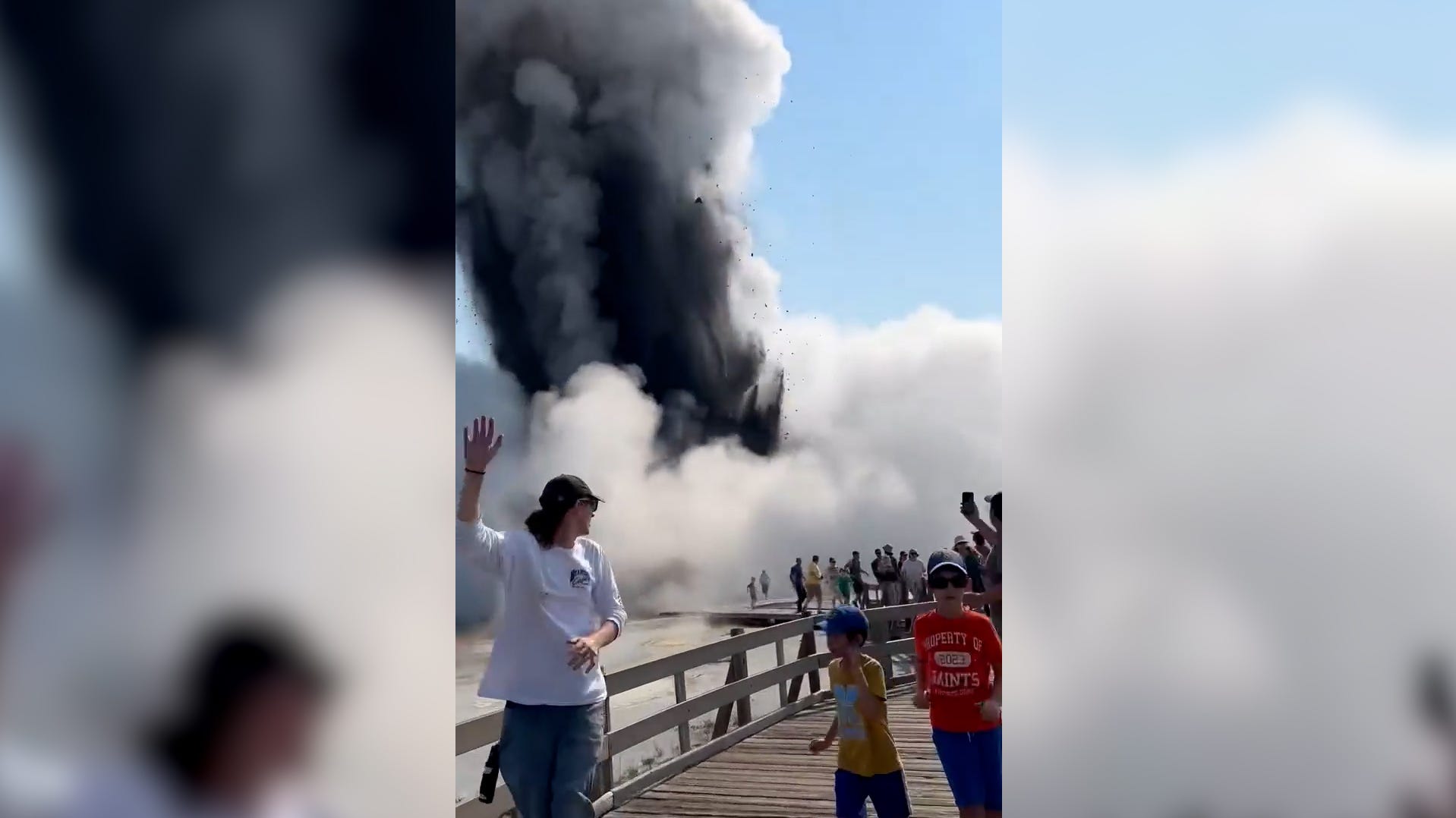Visitors to Yellowstone National Park were startled last month by an unexpectedly powerful hydrothermal explosion – an eruption of hot underground water – that sent steam, boiling water, mud and grapefruit-sized chunks of rock several hundred feet into the air.
No one was injured, but the July 23 explosion in the Biscuit Basin area, just two miles north of the famous Old Faithful geyser, damaged a beach path and nearby thermal pools. The park service has closed Biscuit Basin while it investigates the area.
While tourists flock to Yellowstone for its natural beauty, the park is also known for its geysers, earthquakes and hydrothermal explosions that demonstrate the power beneath its surface – a supervolcano.
What caused the Yellowstone hydrothermal explosion?
The Yellowstone Plateau Volcanic Field, which also includes the caldera, is part of the active volcanic area that stretches across northern Nevada, Idaho and Wyoming. This Yellowstone caldera is the reason for the eruption of the geysers.
The U.S. Geological Survey says geological activity in the park can be a sign of impending disaster, but the Biscuit Basin explosion is not an impending volcanic eruption. Most hydrothermal explosions are small and go unnoticed, says Michael Poland, chief scientist of the Yellowstone Volcano Observatory.
Exploring Yellowstone’s hydrothermal basins
According to the National Park Service, there are more than 10,000 thermal areas in Yellowstone, including hot springs, mud pots, and steam vents. The park is also a hotspot for seismic activity, with an average of 1,500 to 2,500 earthquakes per year. In 2023, there were 1,623 earthquakes, which is considered average. The strongest earthquake reported last year had a magnitude of 3.7, according to the Yellowstone Volcano Observatory.
According to Poland, the explosions can occur anywhere there is hydrothermal activity (“Hydrothermal” refers to heated water in the Earth’s crust).
Last month, 64 earthquakes were reported in Yellowstone, according to the University of Utah’s seismograph stations. Earthquake clusters can occur frequently and account for about 50% of all seismic activity in the Yellowstone area.
How big is the magma chamber under Yellowstone?
The Yellowstone Caldera is about 55 miles long and almost 25 miles wide. The word “caldera” essentially means a giant crater. It is the largest volcanic vent in North America.
Aftermath of the Biscuit Basin eruption

Watch: Hydrothermal explosion in Yellowstone National Park sends guests fleeing
A video captured the moment a hydrothermal explosion terrified visitors to Yellowstone National Park.
What causes hydrothermal eruptions
According to the USGS, when the water in the underground chambers is heated by magma, it can quickly turn to steam, causing a hydrothermal explosion. If the cave is connected to the surface, a geyser can form to release the pressure.
The water temperature of a geyser is typically about 200 degrees Fahrenheit and the hot springs can reach temperatures between 200 and 459 degrees Fahrenheit.
In Yellowstone’s Upper Geyser Basin, Old Faithful Geyser erupts on average every 90 minutes. The eruptions last 1.5 to 5 minutes and reach heights of 106 to 184 feet, releasing 3,700 to 8,400 gallons of boiling water.
Previous volcanic eruptions in Yellowstone National Park
About 640,000 years have passed since the last volcanic eruption in Yellowstone.
The largest of the park’s three major eruptions would have left more than 20 feet of lava, rock and ash covering an area the size of California. Even the smallest eruption had a volume 280 times larger than the 1980 explosion of Mount St. Helens in Washington.
Each of these eruptions released massive amounts of volcanic ash, gas, and magma into the atmosphere, leaving most of the continental United States covered in debris.
Is the eruption of the Yellowstone supervolcano overdue?
The short answer: No. Not in the near future.
According to the USGS, hydrothermal explosions are not an indicator of an impending volcanic eruption. Scientists are currently researching how these explosions can be predicted.
“One of the things we don’t know for sure right now is whether these things can be predicted,” Poland said. “That’s still an open question.”
But even before an eruption, the underground system will likely show warning signs for decades, such as several major earthquakes, a change in the chemical composition of the hot springs and a rise in temperature. According to Poland, the ground would also gradually move tens of meters and release gases.
Contributor: N’dea Yancey-Bragg/USA TODAY
SOURCES: US Geological Survey, National Park Service, University of Utah, National Geographic, Smithsonian Magazine, Volcanodiscovery.com and USA TODAY research

